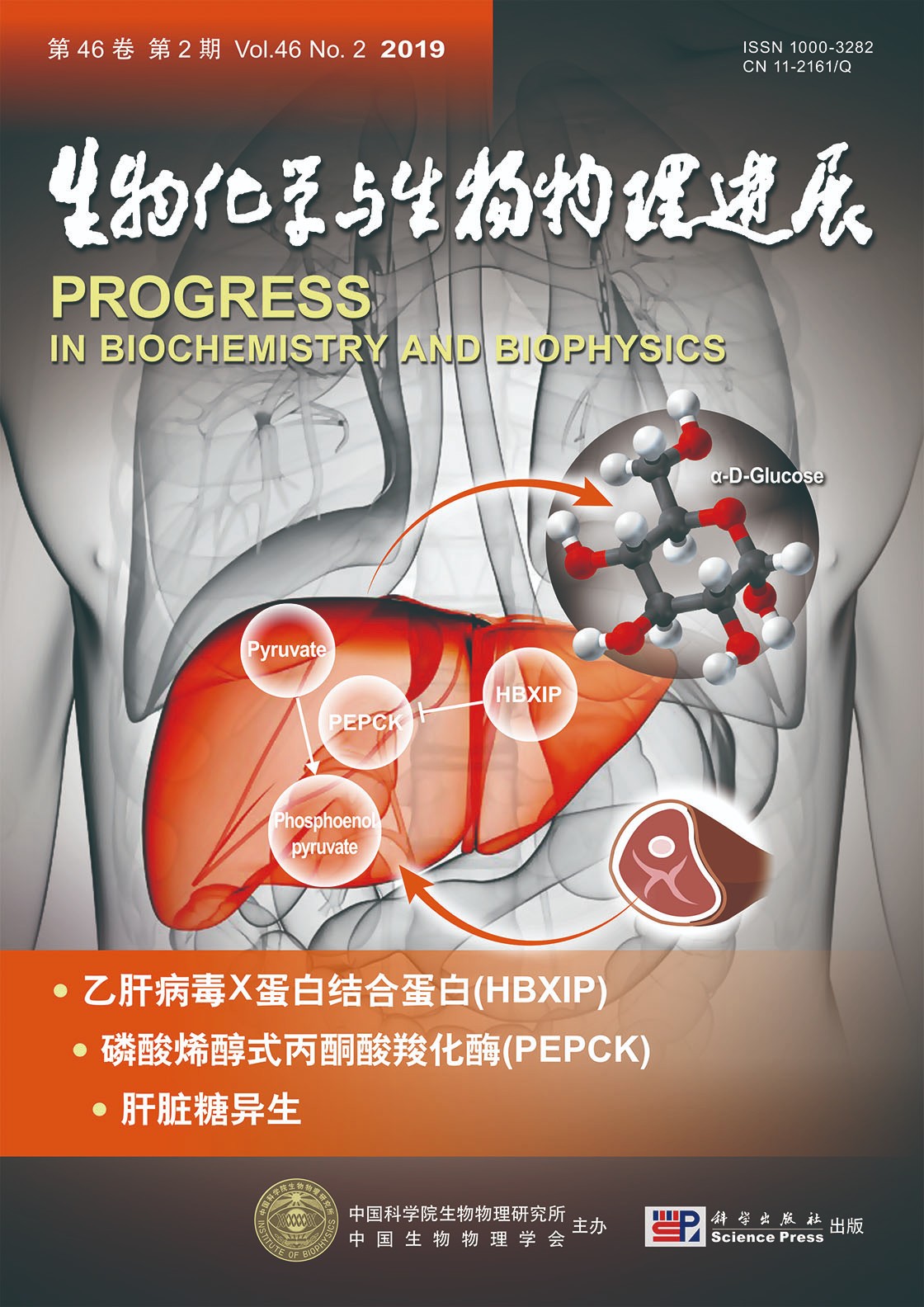2019年第46卷第2期目录
| |

|
封面故事:肝脏是维持机体葡萄糖稳定的最重要组织器官,是糖异生的主要场所. 病理状态下,肝脏糖异生被过度激活引发高血糖,是导致2型糖尿病的主要原因. 肝脏糖异生除受营养信号和激素水平的调节外,肝脏糖异生限速酶磷酸烯醇式丙酮酸羧化酶(PEPCK)的转录活性是调控糖异生水平的关键. 史慧等人发现肝脏中乙肝病毒X蛋白结合蛋白(HBXIP)特异敲除小鼠对糖异生和胰岛素耐受性减弱. 通过荧光素酶报告基因检测、染色质免疫共沉淀等技术发现HBXIP可在转录水平下调PEPCK表达. 该研究揭示HBXIP可作为肝脏糖异生限速酶PEPCK的转录调控因子,可以有效抑制肝脏异常糖异生、减少葡萄糖异常生成,将有望为2型糖尿病临床防治提供新的治疗策略.
(史慧,方润平,张伟英,李迎辉,司传平,熊化保,叶丽虹. 乙肝病毒X蛋白结合蛋白通过下调PEPCK的表达抑制肝脏糖异生,本期第193~200页)
Cover Story:Hepatitis B X-interacting protein (HBXIP) is able to mediate glucose metabolism reprogramming in breast cancer. To investigate the physiological functions of HBXIP in regulation of glucose metabolism, we generated liver-specific HBXIP conditional knockout C57BL/6 mice using Cre/loxP approach. Liver HBXIP-/- mice exhibited a phenotype of glycometabolic dysregulation, such as higher fasting blood glucose level, accumulation of hepatic glycogen, recession of blood glucose profiles, and elevation of gluconeogenesis. The expression levels of PEPCK were remarkably up-regulated in the liver tissues of HBXIP-/- mice. Then, we validated that HBXIP expressions were negatively correlated with those of PEPCK in 30 clinical liver tissues. Mechanistically, luciferase reporter gene assays and ChIP assays showed that HBXIP could inhibit the expression PEPCK at transcription level. Taken together, our findings indicate that HBXIP restrains hepatic gluconeogenesis through suppressing the expression of PEPCK.
|
综述与专论
研究报告
|
|